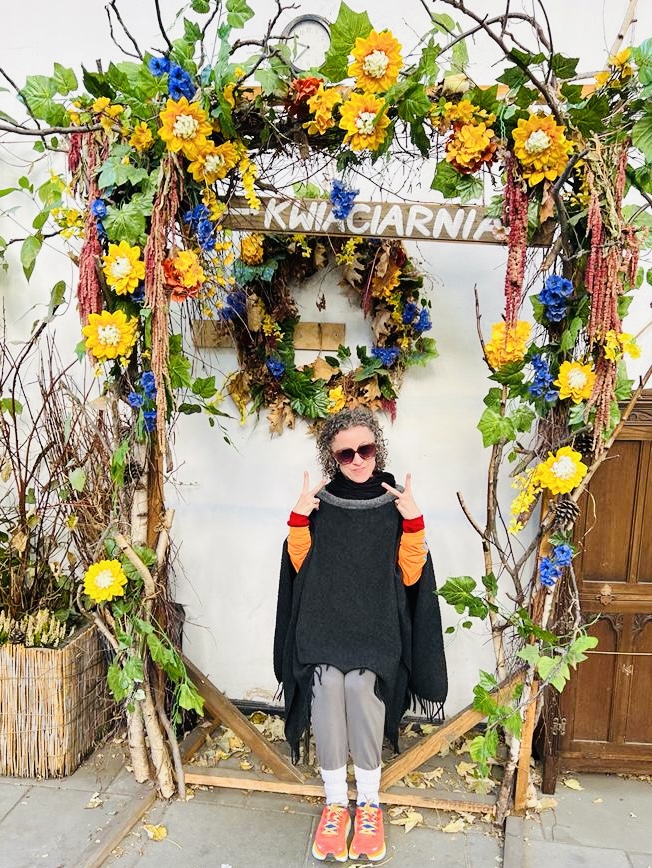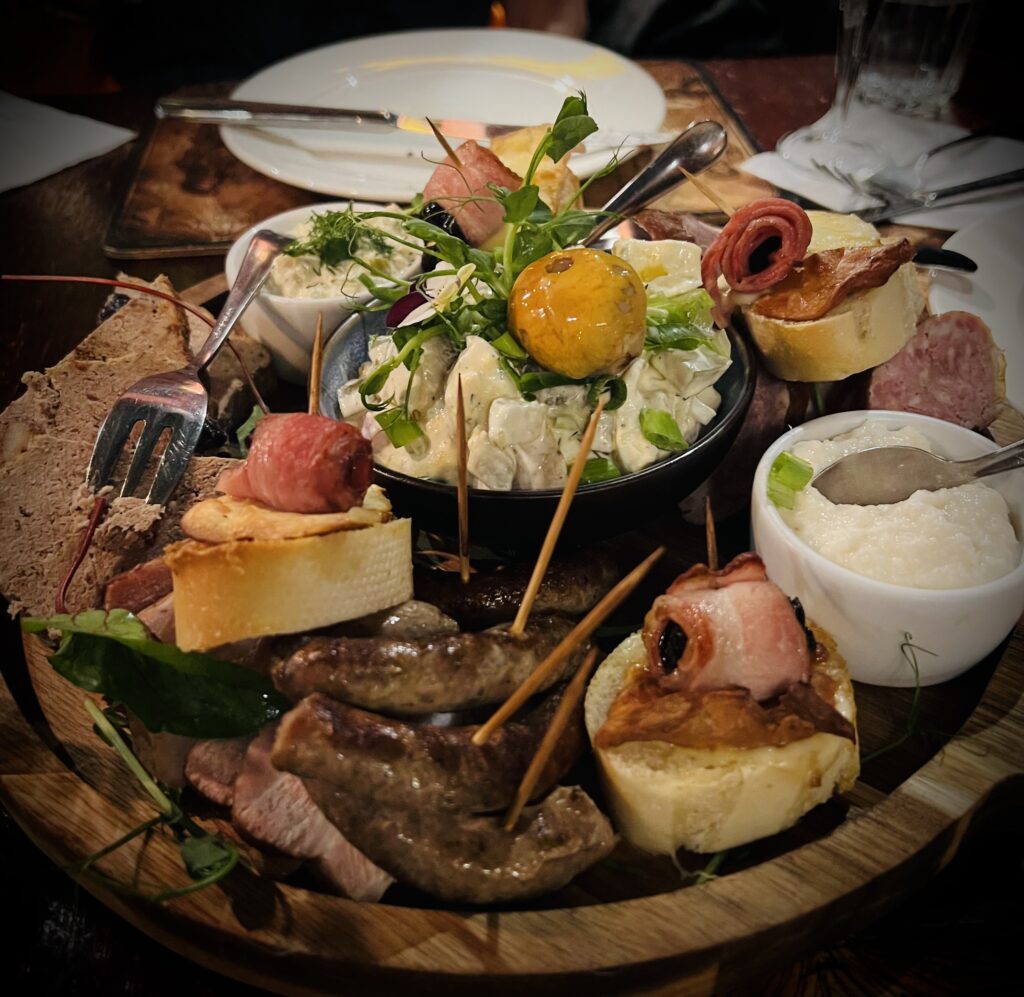
Germany, Austria, and Poland have a rich and diverse history of death rituals and practices. Practices that evolved with both religious influences and regional variations. As a traveling death doula, I recently visited these fascinating countries.
Many of you will find these rituals familiar and commonplace. However, other rituals are unique to Central and Eastern Europe. Here’s some of what I learned.
Germany, Austria, and Poland Death Rituals
Mostly Catholic rituals, what makes these practices unique is the sheer number of people participating in them, especially in rural areas of Germany, Austria, and Poland.
For example, they often celebrate with a special Mass, called a “Requiem,” for the deceased in Austria and Poland. This is when mourners pray for and remember their beloved dead. For centuries, world-renowned composers felt inspired to contribute music to these requiems that stay with us today.
In some parts of Germany, many people visit the graves of their loved ones on All Saints’ Day. This is also a significant holiday in Poland. Millions of families light candles, place fresh flowers on graves and offer prayers for the souls of the departed.
All Souls’ Day is a national holiday in Austria and Poland, observed on November 2nd. On this day, millions tend to graves, lighting candles and offering prayers. It is a time to remember, and honor, loved ones who have passed away.
Some Central and Eastern European cultures have superstitions related to death and burial practices. One family shared with me that they would never bring home items from a funeral or sweep the house for several days after a memorial service.
A Polish Three-Day Funeral
I traced the tradition of a three-day funeral in Poland back to a combination of Catholic religious practices and pre-Christian customs. Poles believe strongly in the importance of praying for the deceased and commemorating their life. That’s why they developed multi-day funerals.
Day 1: The Death Announcement and Vigil
On the first day, the family officially informs relatives, friends, and the community about the passing with the death announcement.
Then a vigil, known as “czuwanie” or “wigilia żałobna,” takes place. Close family and friends gather at the deceased person’s home to offer condolences, pray, and share memories. It often involves lighting candles, praying the Rosary, and reading from the Bible.
Day 2: Funeral Mass and Burial Preparation
On the second day, loved ones prepare the body for the funeral and dress the deceased in their best clothes. The Requiem takes place and includes prayers, hymns, and readings, often led by a priest. After the Mass, there may be a procession to the cemetery, where the burial occurs.
Day 3: Post-Funeral Gathering
They dedicate the third day to a post-funeral gathering. Friends and family come together for a meal to remember and celebrate the life of the deceased. This gathering provides an opportunity for people to offer condolences and support to the grieving family.
While the three-day funeral is a traditional practice, many locals told me it has become less common in modern times due to changing lifestyles and the influence of Western funeral practices. Many people now opt for shorter, one-day funerals.
However, in more rural and traditional areas of Poland, it remains an essential cultural and religious practice for honoring the deceased and providing comfort to the bereaved.
Red Eggs in Poland
Many cultures use red colors at end-of-life ceremonies. Red eggs at funerals, often associated with Orthodox Christianity, are rooted in deep religious significance.
A Symbol of Life
Many cultures worldwide see eggs as a symbol of life and renewal. This symbolism predates Christianity and continues today. In the context of death, the red egg represents the hope of life beyond this realm.
Red represents the blood of Christ in Christian tradition and the triumph of life over death through resurrection. Orthodox priests also bless red eggs every year on Holy Saturday and then distribute them to the congregation after the midnight Easter service.
Mourning and Hope
At funerals, the red egg acknowledges the sorrow of death. It also serves as a reminder that death is not the end but a transition to a new and better existence. Red eggs reflect the belief that just as a chick hatches from an egg, so too will the deceased person be reborn in the afterlife through their faith in Christ.
This is why priests typically distribute eggs to mourners as a way to comfort and console them, as well as to reinforce the belief in the resurrection and the promise of eternal life.

The German “Dance of Death”
Known as “Totentanz” in German, the death dance is a historical and artistic allegorical concept that gained popularity in Europe during the late Middle Ages and the Renaissance. It involves depictions of death as a skeleton or a skeletal figure leading individuals from various walks of life in a dance, symbolizing the universality of death.
Historical Origins
The Black Death (Bubonic Plague) of the 14th century and other pandemics, along with the societal upheavals of the time, inspired a heightened awareness of mortality. The concept of a Dance of Death likely emerged in this context.
Artists expressed Death through various forms, including paintings, frescoes, woodcuts, and literary works. These depictions often featured the personified figure of Death engaging people from all walks of life, including kings, clergy, and peasants.
Moral and Theological Message
It served as a memento mori, a reminder of the inevitability of death and the importance of living a virtuous life. Death Dances emphasized the notion that death comes to all, regardless of social status or wealth.
The literary genre known as “Danse Macabre” comes from this association. It featured poems or narratives in which Death addresses individuals and leads them in the dance. Notable examples include the “Danse Macabre” poem by Jean d’Arras and the “Dance of Death” by Hans Holbein the Younger, a famous series of woodcuts.
Cultural Influence
The Dance of Death had a lasting impact on European culture and the arts. Many Gothic churches featured this theme, where artists depicted Death leading the living in a dance on walls and ceilings.
This typically served as a powerful reminder of the transitory nature of life and the need for individuals to lead virtuous and pious lives. While it was most prominent in the late Middle Ages and Renaissance, I visited dozens of churches and can see its influence living on today.

Polish Memorial Meals
Polish families hold memorial meals, known as “Pominki” in Polish culture, to commemorate the deceased and offer support to the grieving family.
The tradition dates back centuries and the word “Pominki” is derived from the Polish word “pamiętaj,” which means “remember.” The practice has been passed down through generations and remains an integral part of Polish funeral customs.
In the difficult period following a loss, loved ones and friends gather together. They eat delicious Polish food (trust me, it’s underrated!), feeling comfort and a sense of community. For many Polish families, Pominki includes religious elements such as prayers, psalms, and blessings to ensure the deceased’s soul is at peace.
Typical Elements of a Pominki
These meals may vary based on regional and family traditions. Lighting candles and displaying religious icons are common elements, emphasizing the spiritual aspect of the gathering.
Family and friends often share eulogies and stories about the deceased, reflecting on their life and achievements. They set up a table with photographs, mementos, and personal items of the deceased to remember further and celebrate their life.
Rituals Rooted in Community
Germany, Austria, and Poland death rituals, more than anything, reinforce the importance of family, friends, and other loved ones. These rituals are also rooted in shared religious beliefs.
As I travel the world, I’m excited by cultural differences and, at the same time, comforted by similarities. In every community I visited throughout Germany, Austria, and Poland people routinely come together to celebrate new life as well as mourn life’s end.
As it should be.
If you’d like to learn more about world rituals and choose what might work for you and your family, please reach out and get in touch with me today.



Recent Comments